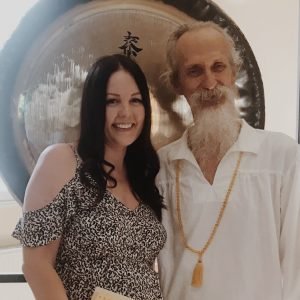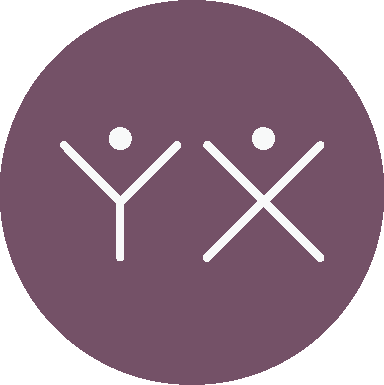
Gong Practitioner Training with Mehtab Benton
I feel very blessed to have trained in Sound Therapy with the Gong Master Mehtab Benton. Based in the USA, Mehtab is an internationally renowned Gong and Kundalini Yoga Teacher, as well as a certified Vedic Astrologer.
Mehtab began training himself with Yogi Bhajan in California in 1973 and used the techniques of both the gong and Kundalini for healing on therapy programs.
It is not often that Mehtab provides training in UK and I was honoured to have trained with him in Kensington in July 2018.
I now provide my own group and one-to-one sound baths for healing and to encourage deep relaxation and renewal in the body.
Due to our busy lifestyles, multitasking and relentless social media and email notifications, we now live in a constant heightened state which puts the body under excessive stress. We are losing the ability to enter a relaxed state naturally, which is leading to increasing rates of stress and anxiety and concurrent ailments caused by the dis-ease of our bodies.
The sound of the gong helps to retrain nervous system functioning by deliberately creating heightened states during play, followed by periods of deep relaxation to retrain our ability to enter into this state. Sound waves clear the mind and stimulate the glandular system to a higher level of functioning. This period of suspended thought aids in the reorganisation of emotional energy and feelings tied into the body structure that consequently affect the mind.
The sound of the gong is a powerful stimulant for the parasympathetic nervous system, which becomes dominant during a deeply relaxed state, particularly when the eyes are closed.
The gong works on all levels to heal and transform. The gong produces strong sound waves which stimulate the physical body by affecting dermatomes on the skin. Skin areas are connected to different organs in the body and segments of the spinal cord. Sound waves produce a massaging effect on corresponding organs and other areas of the body.
The sound of a live gong stimulates circulation while sound frequencies stimulate nerve endings, particularly helpful for neuropathy or nerve damage. Workshops conducted by educator and musician Johannes Heimrath in the 1980’s discovered the gong was most helpful in relieving neck pain and headaches, menstrual difficulties, cramping in the chest and upper respiratory system.
The gong is an effective instrument to help the listener detach from the pressure and content of the mind through an induced meditative state in order to get free of habitual patterns. This makes it particularly helpful for compulsive behaviours and addictions.
The gong tones vibrate the cells of the body and put them back into harmony so we can function at the optimum level. The sound of the gong has the effect of lowering the frequency of the brainwaves. In effect, it causes the brain to slow down – the brain tunes in, or is captivated by the gong sounds, and the brainwaves become slower.
Who is it for: Anyone who wants to experience a deeply relaxed and rejuvenated state. Particularly beneficial for those suffering from stress, anxiety, insomnia, neck pain, headaches, respiratory problems, neurothapies or injured joints.
What to expect:
The session begins with a series of relaxation techniques designed to open the flow of energy and create a body-mind state for change and healing. In this receptive state, the sound of the gong is used to create an extended state of meditation and therapeutic relaxation that moves energy in the body for healing. Healing can be defined as the restoration of the natural balance and flow of energy on all levels of existence; physical, mental, emotional and spiritual.
Healing is about change – the changing of old thoughts, habits, patterns of behaviour that no longer serve the individual, and are creating dis-ease, then sickness in all sheaths of the body. Because it affects the emotional sheath of the body, the sound of the gong can bring about various emotional releases, especially when heard the first several times.
Crying or laughing may be common, as well as transient anxiety, fear, love or bliss as emotional reorganisation is brought about by the sound of the gong. It is common to hear some people snoring during a gong relaxation, even when
the gong is played loudly. Ideally the listener remains both relaxed and aware, so the mind and emotions can achieve clarity. The more relaxed and open you are, the more effective the gong sounds will be.
Thoughts may drift in and out of your mind during the session, which is quite normal. These may be sub-conscious thoughts that we need to let go of as part of the cleansing and rejuvenation process. Time can pass quickly, it is common for listeners to feel only 5 or 10 minutes has passed when its actually been more like 45 minutes.
The silence at the end of the gong playing is as important as the gong sounds themselves and will last a few minutes to enable the ‘shunyata’ to linger a little while longer. This silence is full and intense and listeners should not be in any rush to move out of this place.
You will slowly be brought back into the body and reality of the room, encouraged to take some deep breaths, followed by some small movements and stretching. You might feel a little spacey and it may take a few minutes to ‘re-ground’. You may not wish (or even be able) to talk in the first few minutes as the gongs will have taken you into the right hemisphere of the brain.
You will be encouraged to drink lots of water to enable you to return to a fully-functioning state before you leave the session. During this time, you may wish to share your experience with others, but it is equally fine if you want to keep the experience to yourself.
Most people leave feeling very calm, peaceful and rejuvenated and able to cope with everyday life more effectively. You will probably sleep very well the night after the sound bath, even if you usually suffer from insomnia.
Preparation for the session
It’s preferable not to have a full stomach as this may cause discomfort while lying down. Do not drink alcohol or use recreational drugs, the energies of these may cause unwanted effects. Bring a cushion and one or two blankets to ensure you are both warm and comfortable to aid relaxation. If you find it difficult to keep your eyes closed, you may wish to use an eye pillow or mask. Bring a bottle of water and ensure you use the toilet before you take your space to avoid disruption during the relaxation.
It is preferable to spend the rest of the day/evening in a soothing environment where you can continue to relax, either in a bath, or by reading or listening to some harmonious music. Drink plenty of water for the next few days to help the kidneys flush any toxins out of the system.
Chakras:
When the gong is played, blocked chakras may also open. The experience of the listener will differ depending on which chakra is affected, with emotions experienced as follows:
1st chakra – deep sighing
2nd chakra – humming
3rd chakra – laughter
4th chakra – crying
5th chakra – coughing
6th chakra – internal light
7th chakra – blissful connection
The gong works on the chakras collectively by connecting through energy relationships that exist between them.
Gong Baths are held seasonally, enquire regarding the next Gong Bath session…

